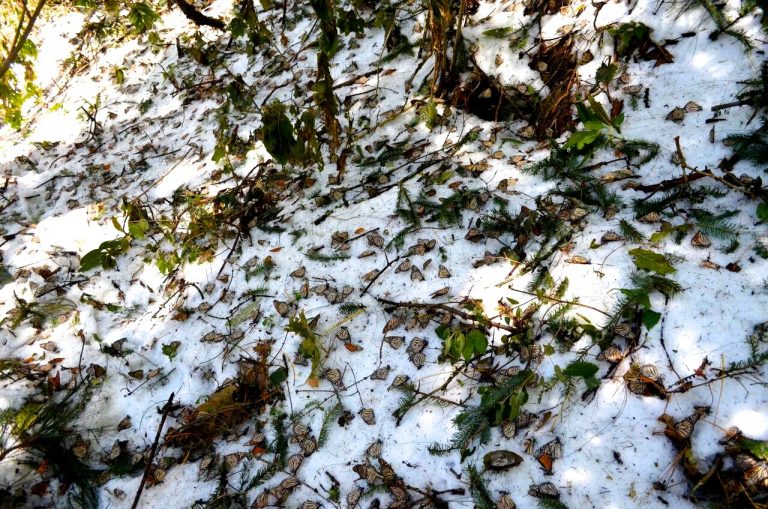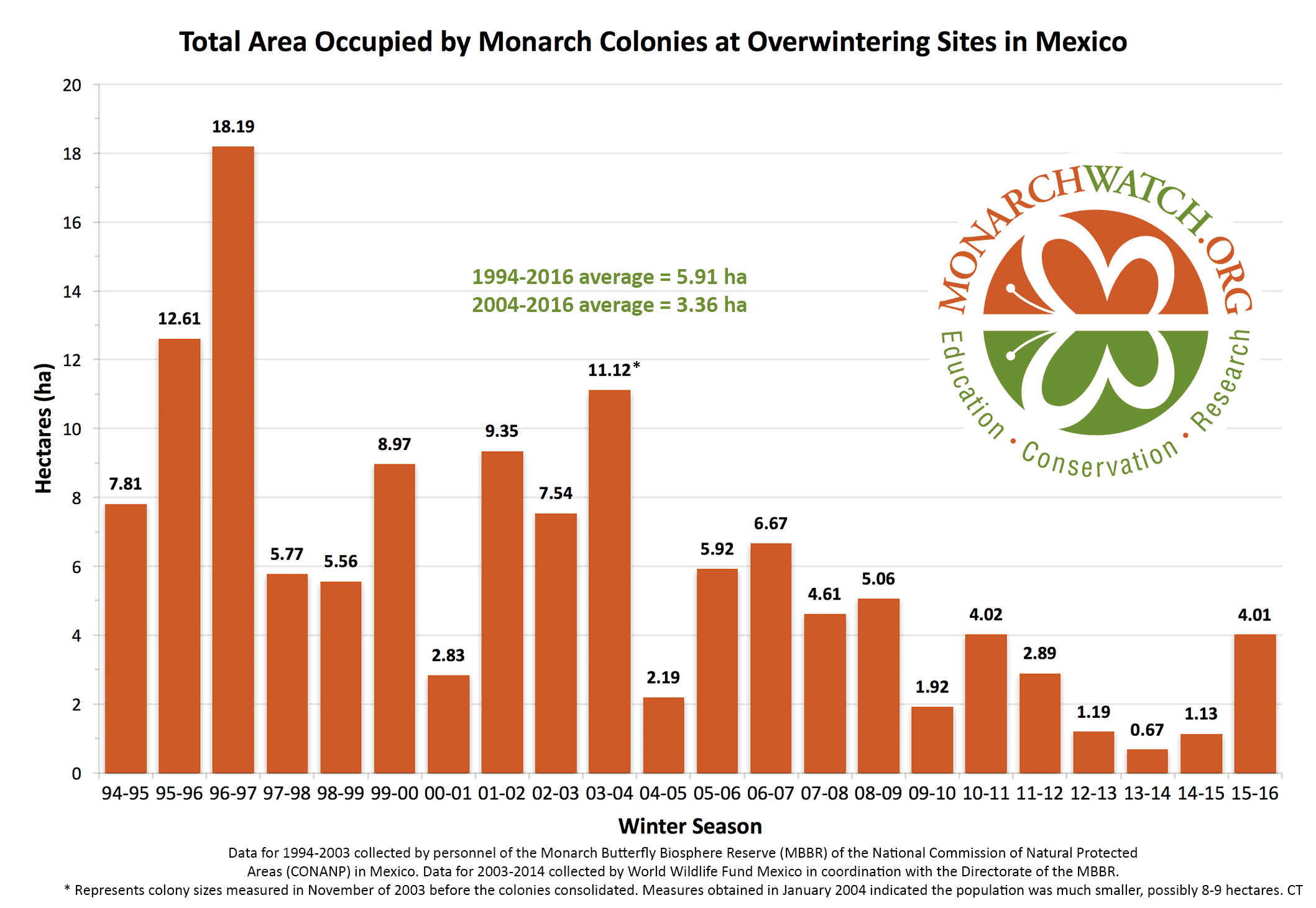General Discussion
Related: Editorials & Other Articles, Issue Forums, Alliance Forums, Region ForumsScientists try to assess Monarch butterfly mortality after Mexican freeze

“I have no new information. We are ‘in limbo,’” said Dr. Chip Taylor, founder of Monarch Watch, the citizen science organization based at the University of Kansas that tags the butterflies each fall to track their migration.
Dr. Lincoln Brower has been working long distance from his home in Sweet Briar, Virginia, with a team of scientists on the ground in the 10,000-foot-tall plus mountains northwest of Mexico City where the butterflies roost each fall. They’ve been gathering data, reviewing climatology information, making observations, and reviewing photos and historical accounts of a previous freeze in 2002.
“It’s been difficult and there are conflicting reports as you know,” said Dr. Brower via email, referring to Mexican tourism officials downplaying the severity of the situation. Soon after news of the storm broke, Mexican officials claimed that only 3% of the butterflies had been affected–about 1.5 million of the estimated 200 million roosting.
“The climate data we have suggest about 50% mortality in Chincua but observations suggest that Rosario was hit harder,” said Brower, referring to the El Rosario sanctuary, the preserve most often visited by tourists. The 50% number would mean 100 million butterflies took the hit–which still leaves us up over last year, just a disappointing and devastating turn of events, if true.
http://texasbutterflyranch.com/2016/03/31/scientists-try-to-assess-monarch-butterfly-mortality-after-mexican-freeze/

One step forward and then this happens.
Baitball Blogger
(46,756 posts)herding cats
(19,566 posts)If we could provide them plenty of food source along their migration trails, it would make all the difference.
MH1
(17,600 posts)Unfortunately shipping is not free. But I'm sure it's not a lot.
http://monarchwatch.org/bring-back-the-monarchs/milkweed/free-milkweeds-for-restoration-projects/
There are numerous Facebook groups where you can ask for milkweed seeds to be sent to you, and you can probably get them for free, or only for shipping costs.
If I stumble across a post in one of those groups and the person is in my area, I will try to donate seeds to the person.
Unfortunately I am not yet a milkweed guru and there are some special techniques to successfully introduce the plant to a place where it isn't. Not anything difficult for a gardener or someone with time on their hands, but unfortunately I am not much of either, just lucked into having the stuff sprout on my property on its own. I knew what it was so encouraged it, and now I have a sufficient plot to get some eggs every year.
So anyway your best bet, if you have an appropriate site put in a request to Monarch Watch, if a smaller site, join some facebook groups. (Search "Monarchs" and "Milkweeds" and you should find a bunch of groups.)
AxionExcel
(755 posts)The freeze is tragic. But the Monarch population has already been decimated by Big GMO-Chemical-Herbiciede-Pesticide-Polluting Ag, Inc. #1 issue, among many, glyphosate, the poison so passionately and irrationally defended around the net by Corp Symps.
1. Roundup-resistant crops.
American corn and soybean growers now plant mostly genetically-modified crops that are resistant to the herbicide Roundup. Rather than till the soil to control weeds in their fields, farmers can now plant their crops first, and then spray their fields with Roundup to kill the weeds. The weeds, including milkweed, die back, while the corn or soybeans continue to grow.
Common milkweed (Asclepias syriaca), perhaps the most important monarch host plant of all the milkweeds, can still thrive in a tilled field. Ask any gardener who has planted a patch of it about how quickly it spreads, and how hard it is to keep from resprouting. But common milkweed (or any milkweed species, for that matter) cannot tolerate these repeated applications of Roundup on farm fields. Milkweed in agricultural fields is believed to have been a food source for up to 70% of monarchs in the past; the loss of these plants could seriously impact the population. Roundup doesn't discriminate, either, so nectar plants that once bloomed between crops have disappeared in these areas, too.
The other 9 Monarch killing factors:
http://insects.about.com/od/butterfliesmoths/a/10-Threats-To-Monarch-Migration.htm
AxionExcel
(755 posts)
And they make GMO crops that are "roundup ready" so they can carpet bomb acreage with herbicides. The GMO crops survive but the milkweeds don't.
